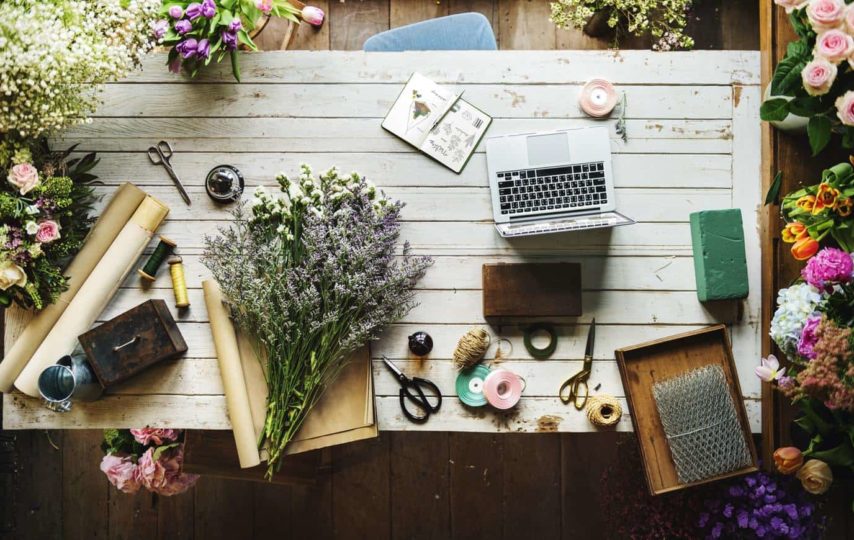Lockdown has afforded many people the chance to take a long, hard look at where they’re living and wonder if it couldn’t be improved. Surveys have suggested that around 75% of households will carry out a DIY project during lockdown, which makes sense; with long stretches of time during which you’re inactive, there’s no better time to take stock of your surroundings. However, getting started on a DIY project can prove tricky. There are so many dos and don’ts that it can be hard to know exactly where to begin. That’s where we come in. Here’s how you can get started on your very first DIY project with no foreknowledge.
Get some funds together
First and foremost, you’ll need sufficient funds to pay for your DIY project. There are many ways people decide to amass the cash for these projects. One of the most common ways is to take out a second mortgage loan, which would be an excellent option if you’re a homeowner. By borrowing against equity on your house, you can receive a large cash injection that would be ideal for carrying out an extension, for example, or a renovation. Remember that you should only pursue this option if you’re financially solvent enough to make repayments. There are other options, too, including a regular unsecured loan or dipping into savings.
Think small at first
While you may have some epic ambitions for your first DIY project, it’s best to approach the subject with small intentions first. That means no massive wall-to-wall renovations and no huge extensions; try painting first, for example, or building a new piece of furniture. Once you’ve built up a little experience in that area, you can start to think bigger and plan new projects accordingly, but if you don’t start small then you risk falling flat on your face and putting all the funds and materials you’ve gathered to waste. Work within your means and you’ll achieve the appropriate results.
Seek help and consult friends frequently
One of the most toxic attitudes you can take to DIY is “I can do it all by myself”. Yes, DIY literally stands for “do it yourself”, but it doesn’t stand for “do it alone”. If you can, enlist the help of friends and family to take on some of the work for you. It doesn’t make any sense to undertake a project entirely alone when you could share the load and collaborate instead. If you don’t know what to do during a certain stage of the process, be sure to consult experts, too, or do extensive research online. There’s absolutely no shame in reaching out to others for help!
Take existing skills into account
If you have a basis in DIY already, then use that basis as a stepping stone to help you with your project. For example, if you’ve put flatpack furniture together (it might sound like an inconsequential skill, but it does take a certain artistry), then you may be ready to move on to a more custom-style project like building a set of shelves or even an entire custom room. Alternately, if you’ve done a spot of painting, then perhaps this could inform the nature of your first DIY project. If you’re an absolute beginner, don’t worry; just start small and take it easy.
Plan extensively
It’s a good idea to create an extensive plan ahead of actually initiating work on your DIY project. Even if you’re simply painting the house or building a piece of furniture, having a plan will help you understand where you should be in the process and what you should be doing in order to get there. You might end up deviating from the plan, falling behind, or perhaps even getting ahead of schedule, but having the plan will help you to right yourself if things do get derailed. No matter how skilled a DIY practitioner you become, always make a plan.
Build a comprehensive supply list
As part of your plan, it’s very important to ensure that you have all the correct tools and equipment you’re going to need. While this list will, of course, differ in its contents based on the project you’re undertaking, there are a number of basic, essential tools that no DIY project can do without. Ensuring that you have these tools means you’ll never be caught off-guard when you’re in dire need of something. This also has the added bonus of giving you a reliable toolbox that you can use when it comes to your next DIY project.
Check you have the authority
Some DIY projects will require special permission from your local council or governing authority before you embark on them. A large amount of projects won’t need you to take this step, but we’re sure you can understand the importance of making sure anyway. The worst thing you could do would be to meticulously plan and budget for your project, only to be told at the last moment that it won’t be possible from a logistical or bureaucratic perspective. Always make sure you chase up planning permission before you embark on a project, because too many DIY hopefuls have been scuppered this way.
This has been our beginner’s guide on how to get started with your very first DIY project. Are you about to embark on this journey? What project are you planning? Let us know!













